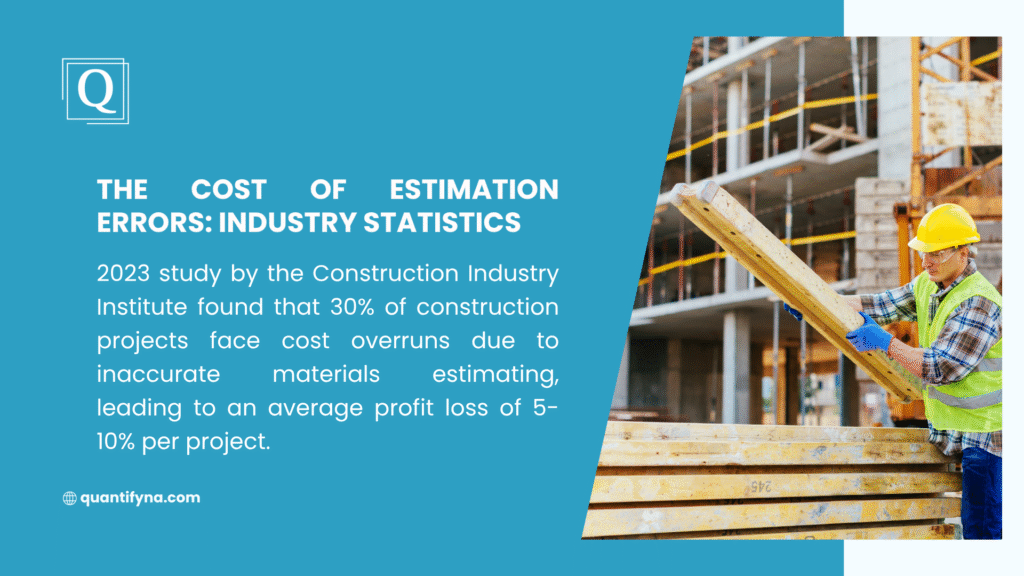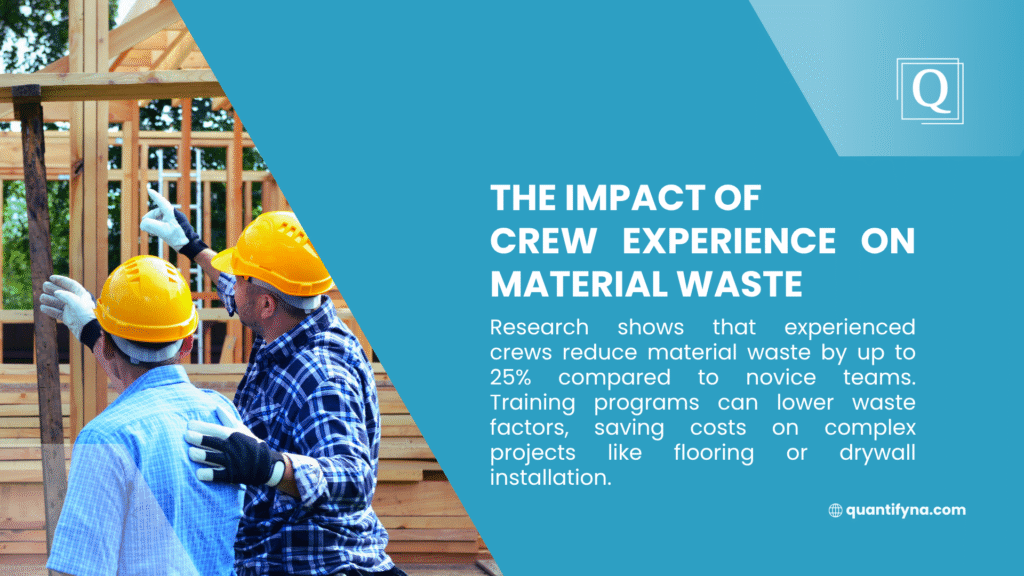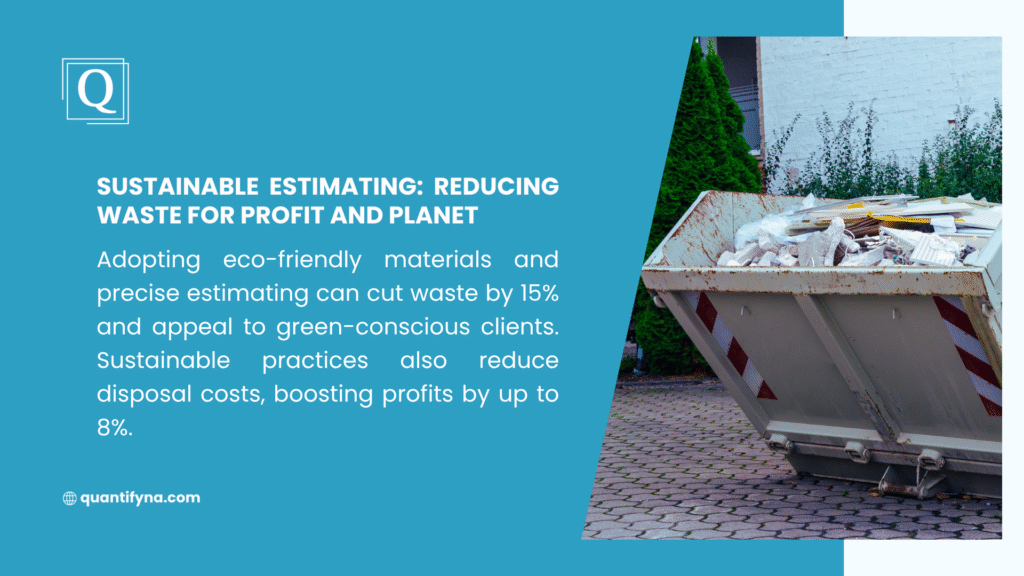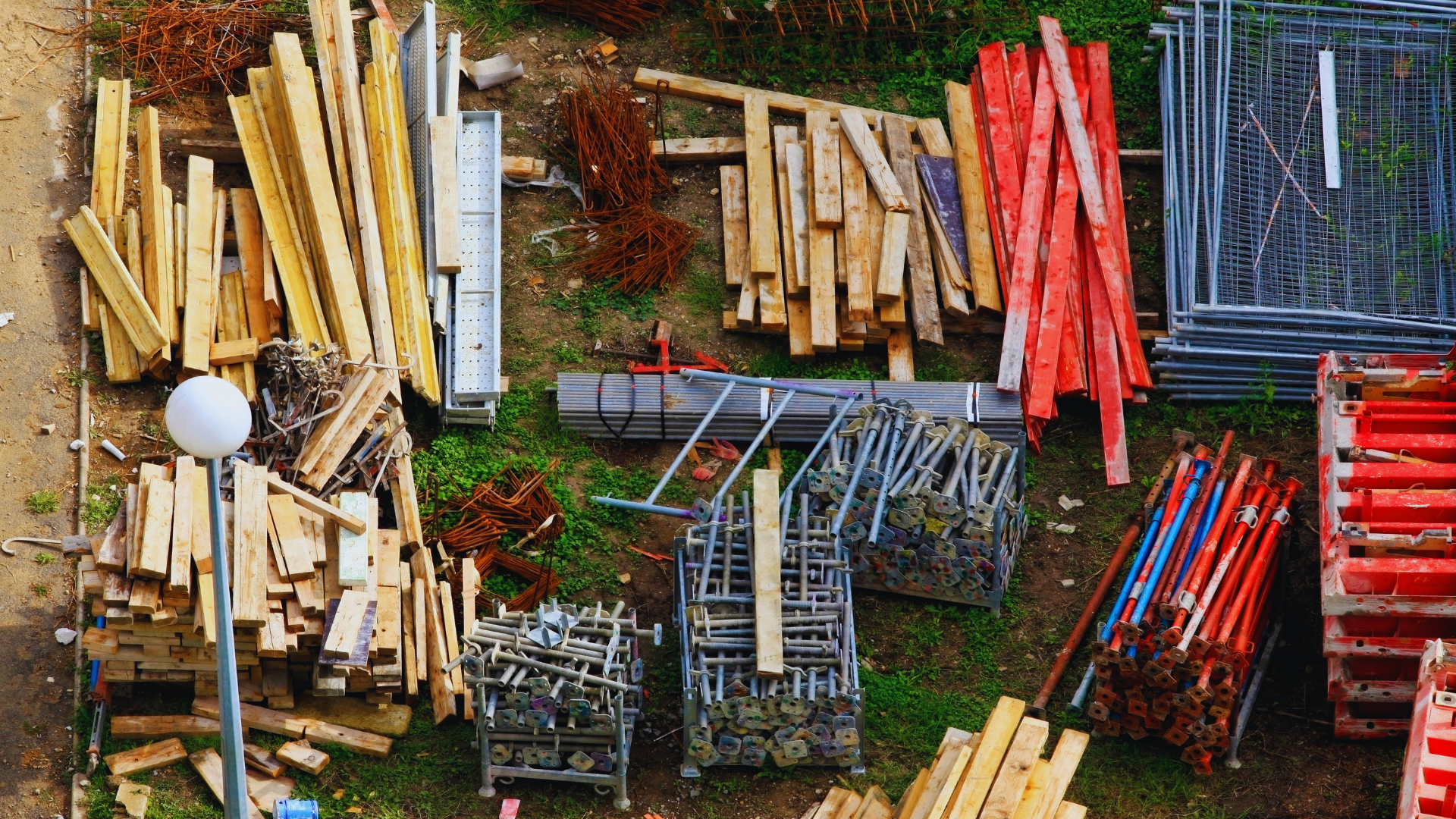Most contractors learn about materials estimating the hard way—through expensive mistakes. A typical scenario involves a small office renovation where the contractor thinks calculating drywall and paint quantities is straightforward. Then reality hits: 40% more materials than needed, tied-up cash flow, and a lesson about why materials estimating requires more than basic math skills.
This experience repeats across the construction industry daily. Some contractors order excessive materials and strain their budgets. Others underestimate needs and face costly rush deliveries. Getting materials estimating right separates profitable contractors from those struggling with thin margins. The difference lies in understanding waste factors, planning for unexpected conditions, and mastering trade-specific requirements.
Understanding Materials Estimating Basics
Materials estimating involves calculating the exact quantities of construction materials needed for project completion. While the concept sounds simple, the reality proves far more complex than measuring walls and multiplying square footage.
The process goes beyond basic calculations. Different materials carry different waste factors that vary significantly based on project conditions. Drywall might require 10-15% waste allowance for projects with numerous corners and angles. Hardwood flooring waste ranges from 5-20% depending on layout complexity and installation crew experience.
Hidden factors complicate materials estimating further. Concrete deliveries arrive in standard truck sizes, not precise calculated amounts. Lumber grades affect quantities because defective boards require replacement. These details create expensive learning experiences for unprepared contractors.
Accurate materials estimating starts with proper construction takeoff procedures. Measurement errors cascade through entire estimates, creating cost overruns worth thousands of dollars. Misread drawings or overlooked building sections cause significant estimation failures.
Material Categories and Their Unique Challenges
Years of construction experience reveal that each material category presents distinct estimation challenges and requirements.
Structural Materials including concrete, steel, and lumber typically offer straightforward estimation processes, but mistakes carry high stakes. Wrong concrete calculations by just 2 cubic yards mean extra truck costs, additional labor, and half-day delays. Small errors compound quickly in structural work.
Finish Materials create the most complex estimation challenges. Drywall estimating extends beyond wall area calculations to include joint compound, tape, screws, and corner beads. Missing any component triggers emergency supply runs. Drywall cost encompasses all installation materials, not just panels.
Specialty Materials demand specific knowledge about installation requirements and waste patterns. Painting estimating depends heavily on surface conditions and preparation needs.
Realistic waste factors based on field experience:
| Material | Waste Factor | Primary Causes |
| Concrete | 3-5% | Spillage and excavation variations |
| Framing lumber | 8-12% | Culling defects and cutting waste |
| Drywall | 10-15% | Complex cuts and handling breakage |
| Flooring | 8-15% | Pattern matching and fitting cuts |
| Paint | 6-10% | Touch-ups and surface preparation |
Proven Materials Estimating Methods
Successful materials estimating requires systematic approaches refined through practical experience and consistent application.
Detailed Quantity Takeoff provides the highest accuracy level for materials estimating. This method involves measuring every component from construction drawings and specifications. Contractors measure everything twice and mark completed sections to avoid omissions. Construction estimating accuracy depends on thoroughness during this critical phase.
Assembly-based thinking streamlines estimation for complex systems. Rather than estimating drywall panels, joint compound, and screws separately, experienced estimators consider complete drywall assemblies. This approach prevents forgotten accessories that create costly delays. Drywall takeoff includes all components needed for finished walls.
Square Footage Methods work effectively for specific material types and simple configurations. These methods apply well to straightforward rectangular spaces with minimal complications. Complex layouts with multiple angles require more detailed approaches.
Parametric Approaches use mathematical relationships between project characteristics and material quantities. This method excels for repetitive elements and standardized construction components.
Common Materials Estimating Problems

Materials estimating faces predictable challenges that significantly impact project costs when not properly addressed.
Drawing Discrepancies create the most expensive estimation problems. Plans frequently fail to match actual site conditions. Existing buildings may have different dimensions, hidden structural elements, or accessibility limitations not shown on drawings. Successful contractors always assume some surprises and build appropriate allowances into estimates.
Material Price Volatility affects project budgets throughout construction duration. Lumber prices swing 20% monthly during volatile periods. Steel fluctuates with commodity markets. Smart contractors secure firm pricing from suppliers and lock rates when possible for major purchases.
Delivery and Site Constraints rarely receive adequate attention during materials estimating. Truck access limitations, storage space restrictions, and material handling requirements affect both costs and scheduling. Projects requiring hand-carrying materials or special equipment access need adjusted estimates.
Site conditions dramatically affect installation efficiency. Labor cost to hang and finish drywall increases substantially when working in tight spaces or multi-story buildings without elevators.
Technology Applications in Materials Estimating
Modern materials estimating increasingly rely on digital tools that improve accuracy while reducing time requirements.
Digital Takeoff Software enables direct measurement from electronic drawings. These applications automatically calculate areas, perimeters, and counts while maintaining measurement precision. Integration with comprehensive estimating systems creates efficient workflows.
Building Information Modeling (BIM) provides three-dimensional models containing detailed material specifications. BIM-based materials estimating offers exceptional accuracy by extracting quantities directly from building models. However, most projects still lack complete BIM documentation.
Mobile Applications facilitate field verification and documentation. Contractors can measure existing conditions, photograph site constraints, and verify drawing accuracy using smartphones and tablets. These tools prove especially valuable for renovation projects.
Cloud-based platforms enable real-time collaboration between estimators, suppliers, and project teams. Immediate access to current pricing and material availability improves estimate accuracy and speeds decision-making.
Flooring Materials Estimating Specifics
Flooring materials estimating requires specialized knowledge that varies significantly by flooring type and installation method.
Carpet Installation involves more than simple area calculations. Carpet manufactured in standard widths (typically 12 feet) requires seam planning for optimal material usage. Waste increases dramatically in rooms that don’t align with standard widths. Carpet vs hardwood cost comparisons must account for these installation realities.
Hardwood Flooring estimation depends on board lengths, widths, and grade specifications. Ordering correct square footage with inappropriate length distributions creates installation problems and increases waste. Contractors should specify not just quantities but length requirements when possible.
Laminate installation requires careful attention to accessories that are often overlooked in basic estimates. The cost to install laminate flooring includes underlayment, transition strips, and trim moldings. Missing any component delays completion and increases costs.
Mastering Waste Factors

Accurate waste factor application requires tracking actual material usage across multiple projects rather than relying on generic industry averages.
Project-specific factors influence waste more than standard percentages suggest. Experienced crews working in simple conditions might achieve 8% waste whereas handbooks recommend 12%. New crews tackling complex layouts could reach 18% waste on similar materials.
Environmental Conditions affect material waste patterns. Cold temperatures increase brittleness in certain materials. Hot weather causes expansion and warping issues. Jobsite security impacts waste through theft and vandalism potential.
Historical Data Collection provides the most reliable waste factor information. Contractors who systematically track actual usage versus estimates develop accurate waste factors specific to their installation methods and crew capabilities.
Waste factors require adjustment based on project complexity, crew experience, and site conditions rather than blind application of standard percentages.
Integration with Complete Project Estimates
Materials estimating connects directly with other estimation disciplines to create comprehensive project pricing.
Labor Coordination links material quantities with installation time requirements. Accurate material estimates drive realistic labor calculations and project scheduling.
Equipment Planning ensures material handling and installation equipment align with material quantities. Large deliveries might require additional equipment or extended rental periods.
Schedule Integration affects material delivery timing and storage requirements. Materials estimating must consider project phasing to optimize delivery schedules and minimize storage costs.
Different estimating approaches suit various project phases. Early conceptual estimates might use top-down estimating methods with broad assumptions. Detailed bid estimates require bottom-up estimating with precise quantity takeoffs. Understanding top-down vs bottom-up estimating helps match methods to accuracy requirements.
Quality Control Systems
Systematic review procedures catch materials estimating errors before they impact project costs and schedules.
Multiple Review Levels involve different team members checking calculations and assumptions. Fresh perspectives often identify errors missed by original estimators. Senior staff should review complex or high-value estimates.
Comparative Analysis compares estimate results with historical data from similar projects. Significant deviations from expected material quantities per square foot trigger additional investigation. Sometimes differences reflect legitimate project variations, but errors occur frequently enough to warrant systematic checking.
Comprehensive Checklists ensure the inclusion of all material types and accessories in estimates. Small items like fasteners, adhesives, and sealers accumulate substantial costs over the project duration.
Advanced Materials Estimating Strategies

Experienced contractors employ sophisticated techniques that improve accuracy while maintaining estimation efficiency.
Value Engineering during estimation phases identifies cost reduction opportunities without quality compromise. Alternative materials or installation methods might offer significant savings while meeting project requirements.
Supplier Collaboration provides access to current pricing and availability information. Strong supplier relationships deliver competitive advantages through better pricing and advance warning of supply issues.
Risk Assessment evaluates potential impacts from material price volatility, availability problems, and quality concerns. Systematic risk evaluation improves estimate reliability and project success rates.
Market awareness helps contractors anticipate price trends and adjust estimates accordingly. Understanding seasonal patterns, commodity cycles, and supply chain issues provides competitive advantages.
| Strategy | Application Method | Typical Benefits |
| Supplier partnerships | Regular price updates and availability alerts | 3-5% better pricing |
| Historical tracking | Actual versus estimated analysis | 15-20% accuracy improvement |
| Value engineering | Alternative material research | 5-15% cost reduction |
| Risk planning | Market volatility contingencies | Reduced cost overrun risk |
Materials estimating continues evolving with new technologies, methods, and market conditions. Successful contractors adapt their approaches while maintaining a focus on accuracy and profitability.
Avoid Doing Common Estimating Mistakes
The combination of systematic methods, appropriate technology, and practical experience creates reliable materials estimating results. Whether working on simple residential projects or complex commercial developments, accurate materials estimating protects profit margins and ensures project success.
Don’t let materials estimating mistakes eat into your project profits. Quantify’s experienced estimating team helps contractors achieve accurate material calculations using proven methods and cutting-edge technology. Stop losing money on overordered materials and rush deliveries—partner with Quantify today and start winning more profitable bids with precise materials estimating that keeps your projects on budget and on schedule.




